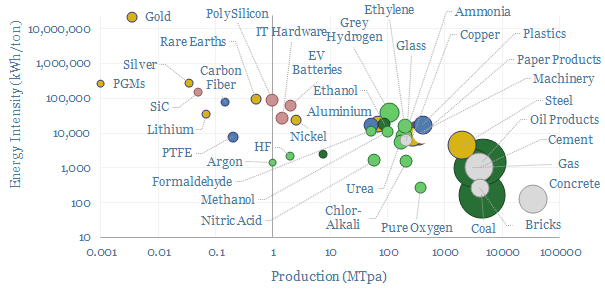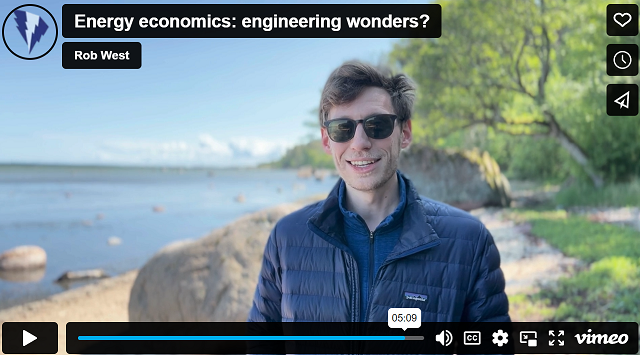Many questions that matter in the energy transition are engineering questions, which flow through to energy economics: which technologies work, what do they cost, what energy penalties they have, and which materials do they use? We see an increasing intersection for economics and engineering in our energy transition research.
Behold thermodynamics!! Read the notes below, and you will no longer be tempted to commit exergetic harakiri by converting ratable electricity into some fuel that you can then run through a heat engine.
How does that work? Frankly, some of the statements we hear about decarbonization are akin to a totally untrained person, casually walking in off the street to a neurosurgery, and deciding to grab a scalpel. Sometimes it is helpful to understand how energy units work, how electricity works, how power grids work, how magnetism works, how metals work, how gas compression works, how cryogenics works, how semiconductors work or how the internet works.
What does it cost? Some commentators seem to think decarbonizing the planet is going to be simple. If you think the solution is simple, the most likely reason is that you do not understand the complexity of the problem. We have built over 160 economic models, of different technologies in the energy transition, or different materials and manufacturing value chains that will themselves need to be decarbonized. One of our strongest held views is that decarbonization will be easier using low-cost technologies, and a good cut-off for “too expensive” is decarbonization technologies costing well over $100/ton.

What energy penalties? Net energy return on energy invested (EROEI) has risen by 5x over the past 200-years, to 28x in today’s global energy system. Strangely, even our own roadmap to net zero sees this mega-trend reversing to 2050 (note below). But hopefully EROEI declines will not be overly severe or maybe they can even be ameliorated. Yes, you guessed it, engineering equations govern the energy efficiencies of power plants, energy penalties of CCS, energy penalties of hydrogen or energy losses in inverters and power electronics.
How much metal or material? The average metal and material sees demand grow 3-30x in the energy transition, due to the growth of wind, solar, electric vehicles and batteries, and the current use factors in those spaces. But often, it takes some energy economics to determine how much material you can thrift.
Does that company’s technology work? We like to answer this question by reviewing the company’s patents, and scrutinizing the engineering details. All of our patent reviews are linked here, ranging from true breakthroughs with a moat around them, to other companies that seem to have the engineering equivalent of a flat tyre. A recent observation is that many technologies progress more slowly, and are harder to de-risk, than we naively hoped, based on a former career covering large-cap equities. We really like the 5-point framework at the back of this note for assessing the road to maturation.
Humility moment. After five years running a research firm focused on the energy transition, we are still working hard to correct our historical misconceptions, and educate ourselves into how the world’s energy-industrial complex works. If we can help you, field requests, or dig into any topics that are swirling around in your minds, then please do contact us.

